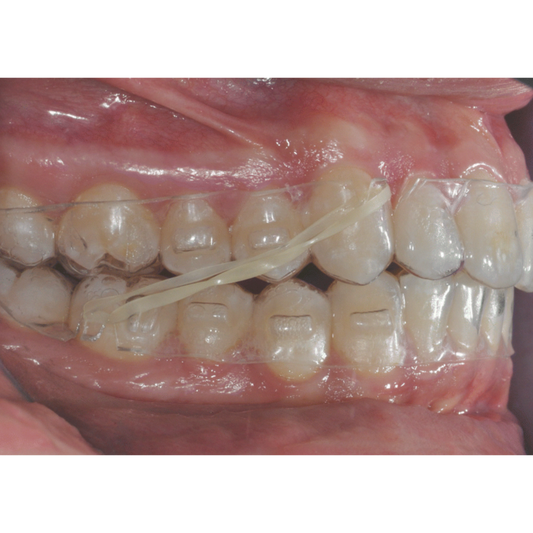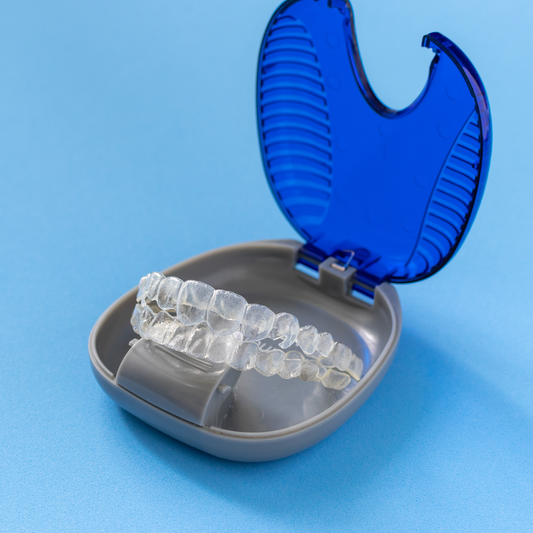
🥷 Mastering Clear Aligner Wear Schedules: A Ninja-Level Guide
🥷Mastering Clear Aligner Wear Schedules: Weekly vs. Bi-Weekly Changes
When it comes to clear aligner therapy, timing is everything. One of the most frequently asked questions from both dentists and patients is: “How often should aligners be changed?” The answer? It depends—on biology, clinical goals, patient compliance, and the unique strategy of each case.
In this post, the Aligner Ninjas break down the science and strategy behind clear aligner wear schedules. Whether you're considering weekly aligner changes or sticking with the traditional bi-weekly approach, understanding the pros, cons, and clinical implications can lead to smoother treatments and happier patients.
⏳ The Basics: Why Wear Schedules Matter
Clear aligners move teeth through gentle, controlled forces applied over time. Each aligner is programmed to make a small amount of movement—typically 0.25 to 0.33 mm per tooth. The speed at which a patient progresses through their aligners can significantly affect:
-
Biologic response and tooth tracking
-
Total treatment time
-
Patient experience and compliance
-
Clinical monitoring frequency
Choosing the right schedule is a balance of efficiency, biology, and behavior.
⚔️ Weekly Wear Schedule: Swift Like a Ninja
A weekly aligner change schedule is ideal for patients who are consistent, compliant, and seeking faster results.
✅ Benefits:
-
Shorter treatment time: Weekly changes can cut total treatment time by 30–50% when clinically appropriate.
-
Higher patient motivation: Patients feel a sense of momentum as they progress faster.
-
Better hygiene: Fresh aligners more often can mean fewer chances for plaque buildup and discoloration.
❌ Considerations:
-
Requires strong compliance: Missing even one day can throw off the treatment plan.
-
Not ideal for complex movements: Difficult rotations, extrusions, or root movements often require more time per stage.
-
Risk of tracking issues: If the biology can’t keep up, you may see aligners stop fitting properly.
🛡️ Bi-Weekly Wear Schedule: The Traditional Path
The two-week wear schedule has been the standard for years and remains appropriate for many cases.
✅ Benefits:
-
More forgiving for non-compliant patients: Offers a buffer for less consistent wear.
-
Ideal for biologically demanding movements: Gives the body more time to adapt.
-
Smoother tracking: Fewer mid-treatment refinements in some complex cases.
❌ Considerations:
-
Longer treatment duration: Slower progression may reduce patient satisfaction.
-
Potential for overcorrection: Some movements may plateau before 14 days, wasting time.
-
May feel too slow for motivated patients: Especially in cosmetic cases with short timelines.
📅 Clinical Scheduling: How Your Wear Schedule Impacts Appointments
Your chosen aligner wear schedule directly affects how often you need to see patients and monitor progress.
| Wear Schedule | Typical Check-In | Common Touchpoints |
|---|---|---|
| Weekly | Every 6–8 weeks | Scan for tracking, deliver new aligners |
| Bi-Weekly | Every 8–12 weeks | Fewer visits, ideal for remote tracking |
| Accelerated | Every 4–6 weeks | In cases using vibration or acceleration tools |
If you're offering remote monitoring, a weekly schedule can still work—but it requires strong digital systems and patient education.
👤 Patient Convenience Factor
Aligner wear schedules don't just affect teeth—they affect lifestyles.
For Weekly Wear:
-
Ideal for weddings, events, or anyone in a time crunch.
-
Requires more discipline: 22 hours/day is non-negotiable.
-
Works well with motivated adult patients.
For Bi-Weekly Wear:
-
Better for teens or patients with less consistent routines.
-
Lower risk of non-tracking due to occasional under-wear.
-
Slower pace means less pressure, but longer journey.
A key part of Aligner Ninja strategy is matching the wear schedule to the person, not just the plan. Like any good ninja, we tailor every move to the situation.
🧠 Clinical Pearls: When to Use Which
Use Weekly Wear When:
-
Patient is highly motivated and digitally engaged.
-
Case is mild to moderate with mostly tipping movements.
-
You're aiming for a quick cosmetic change (e.g. anterior alignment).
Use Bi-Weekly Wear When:
-
You’re managing complex movements (extrusions, rotations).
-
Patient is less compliant or frequently removes aligners.
-
You’re using attachments heavily and want to ensure seating.
Bonus Tip: Use the first few aligners at 10–14 days to assess tracking, then switch to weekly if performance is strong.
🧩 Mixed Schedules: The Hybrid Approach
Advanced users (or, shall we say, Aligner Ninjas 🥷) sometimes use a hybrid approach:
-
Start with bi-weekly wear for stabilization and compliance training.
-
Transition to weekly wear after 3–5 trays if tracking is good.
-
Return to bi-weekly for finishing stages or complex refinements.
This gives you control, protects tooth biology, and keeps patients moving forward.
🧘 Final Thoughts: It’s All About Strategy
There’s no one-size-fits-all answer to aligner wear schedules. Like any great battle plan, it depends on your opponent (the malocclusion), your tools (attachments, auxiliaries, remote monitoring), and your team (the patient!).
Whether you're running a cosmetic sprint or guiding a complex case through full correction, the key is having a strategy that’s Silent. Swift. Strategic.
🥷 Want Help Fine-Tuning Your Wear Protocols?
The ClinCheck Ninjas are here to audit, optimize, and elevate your aligner plans. From wear schedules to staging strategies, we help you save chair time, reduce refinements, and deliver ninja-level care.




